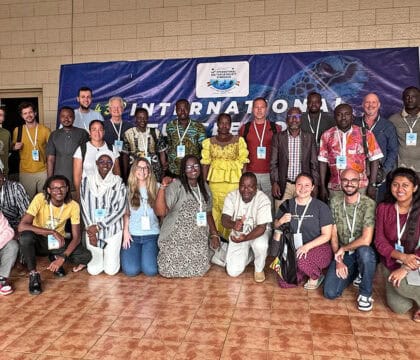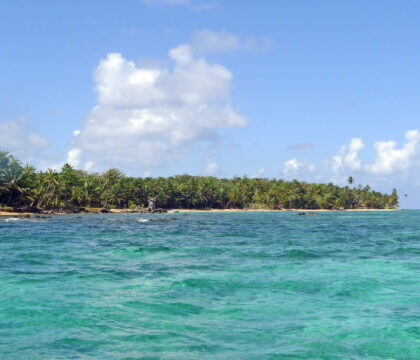May 28, 2025 • Travel Ideas, Trip Reports
For the past three years, I’ve been incredibly fortunate to co-lead Oceanic Society trips to one of the top destinations on any snorkeler or diver’s bucket list: Raja Ampat, Indonesia. In the heart of the Coral Triangle, this tropical paradise is home to more than 600 species of hard coral and 1,700 species of reef fish—more than anywhere else on Earth. Everywhere you look, both above and below the surface, there is always something new to discover.
As a tropical marine biologist, I always dreamed of exploring and documenting this legendary epicenter of biodiversity. Getting to do exactly that with Oceanic Society has been both a joy and a privilege—especially because I get to share the experience with our enthusiastic, curious, ocean-minded guests. Raja Ampat is undeniably special, but what defines it for me are its sheer abundance of life, ingenious adaptations, and dramatic contrasts. Let me explain.
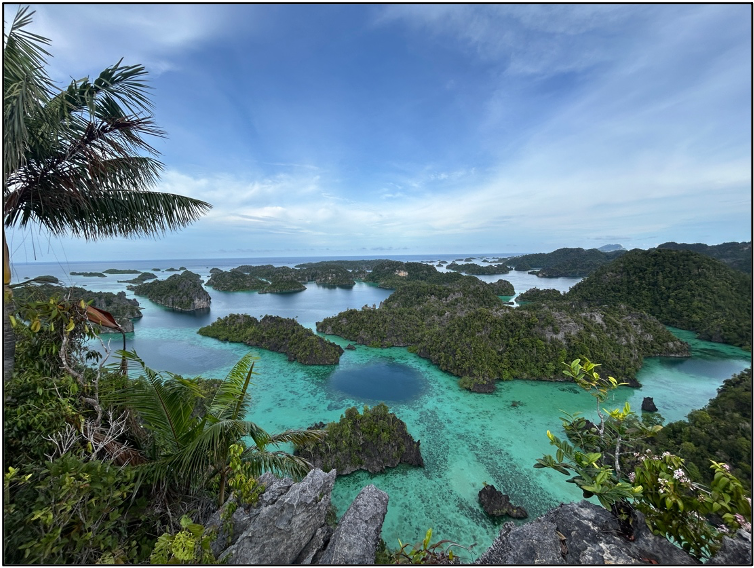
Short climbs offer stunning panoramic views of Raja Ampat’s islands and the world’s most biodiverse reefs below. © Alex Kattan
A Living Reef, Teeming with Life
From the tiniest of invertebrates to some of the largest creatures on Earth, Raja Ampat has it all. Whether you’re drawn to the abundance and diversity of small yet flamboyant nudibranchs or the majesty and grace of ocean giants like manta rays and sperm whales, Raja Ampat showcases marine life at every scale. Working alongside naturalist Dalton Ambat— hands-down the best guide in Indonesia—I love helping to fine-tune each itinerary to match our guests’ interests and maximize wildlife encounters.
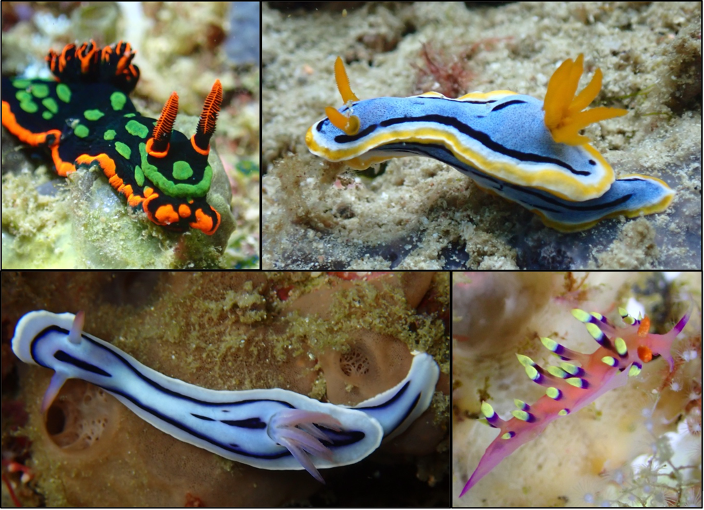
Countless colorful nudibranch species can be spotted in Raja Ampat—sometimes with a guide’s help, sometimes all on your own! © Alex Kattan
Wherever you look in Raja Ampat, the world is alive around you. The abundance of life is nothing short of magical. Live hard coral cover here is perhaps the highest in the world, made all the more precious in an era of widespread coral reef bleaching fueled by climate change. The ocean floor teems with colorful, alien life: soft corals, sponges, sea fans, tunicates, and more. Just above the reef are countless small fishes, especially damselfishes that dart in and out of the complex maze of coral branches.
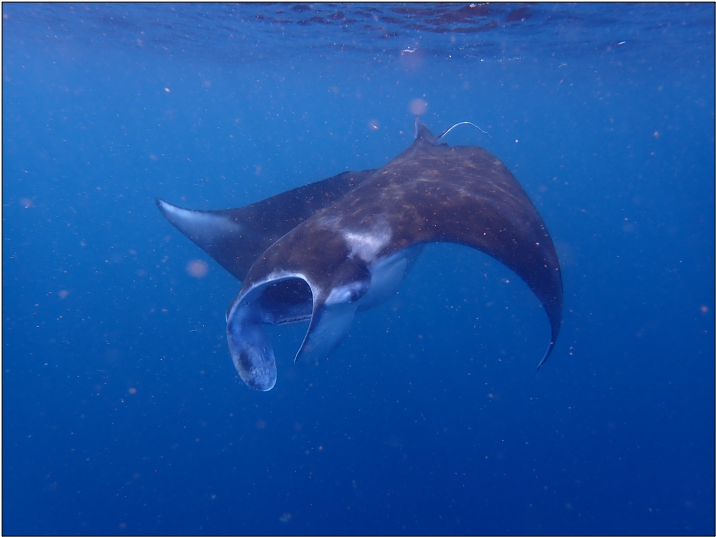
Raja Ampat is home to a thriving population of reef mantas. Their larger cousin, the oceanic manta, can also be seen. These charismatic and curious animals are a joy to swim with. Photos of their undersides can be submitted to a local research group to help monitor the population and identify individuals. © Alex Kattan
A bit deeper, large predatory fish like snappers and sweetlips hover in semi-stationary schools, while shoals of parrotfish, rabbitfish, and surgeonfish cruise past like finned rush hour traffic. Semi-pelagic predators like trevally lurk just off the reef, waiting for dusk–their optimal hunting hour. Fish, fish everywhere!
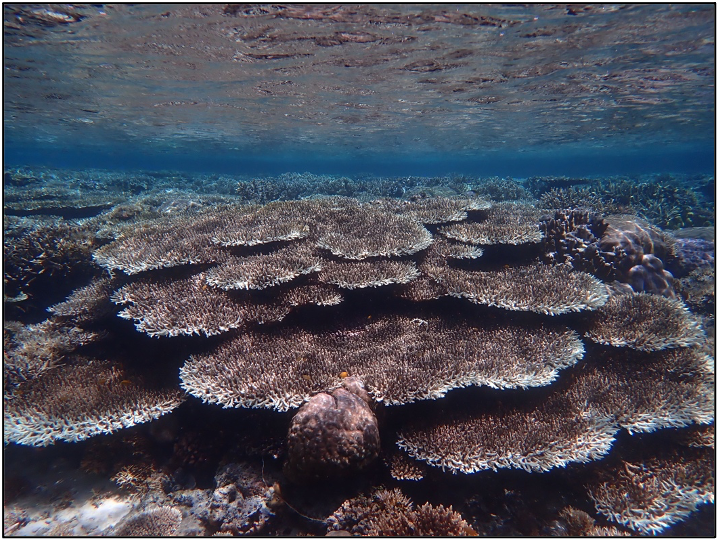
Scenes like these massive, cascading table corals are becoming increasingly rare in the tropics, making Raja Ampat one of the ocean’s last bastions of healthy reefs. © Alex Kattan
Mutualism, Camouflage, and Other Marvels
Evolutionary ingenuity is on full display in Raja Ampat. With so many species packed into its reefs, the pressures of predation and competition for resources like food and space have forced creatures to come up with ingenious and wondrous adaptations to life’s challenges.
Mutualistic relationships are one particular strategy, and no group of species presents this more clearly than the anemonefishes (clownfishes). Small and gorgeous, each clownfish lives among a host anemone, a bottom-dwelling relative of jellyfish and other organisms that possess defensive cnidocytes (stinging cells). Clownfish have evolved particularly thick mucus layers that protect them from an anemone’s sting, thereby allowing them to swim safely among the shelter of the tentacles. The anemone benefits, too; clownfish aggressively chase away potential predators and provide nutrients. Clownfish are a fan-favorite, and offer a great opportunity to discuss the complex web of relationships on the reef.
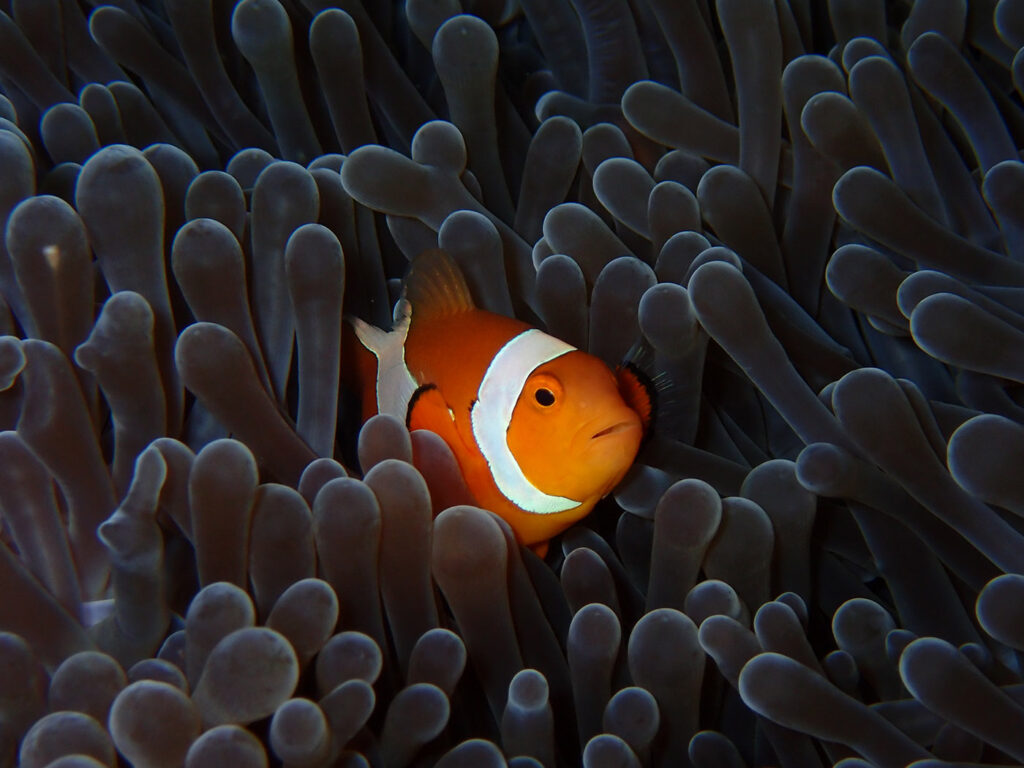
Clownfish and anemones, brought to fame by Disney Pixar’s Finding Nemo, are a prime example of mutualistic relationships on the reef. © Alex Kattan
Other animals rely on stealth, and the creative use of color abounds on the coral reefs of Raja Ampat. While our eyes are drawn to the bright yellows, oranges, greens, and purples of some species, others use color to blend in. For example, crocodilefish and tasseled wobbegongs (a type of shark) have mottled, dark coloration that makes them difficult to detect – a perfect adaptation for ambushing prey. I love pointing out these animals to Oceanic Society guests and seeing their surprise when their eyes adjust to what is quietly in front of them.
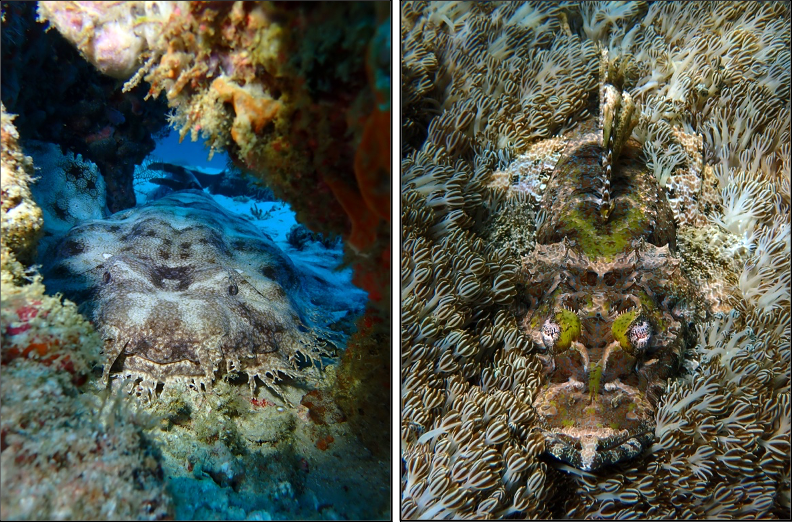
Tasseled wobbegong (left) and crocodilefish (right) exemplify the use of color in camouflage – a clever adaptation for these ambush predators! © Alex Kattan
Then there are the adaptations in form and strategy. The perpetual evolutionary competition among predators and prey has led to some incredibly unique body forms and hunting strategies. One of my favorite examples is the unassuming shrimpfish (also known as razorfish), of which there are two species in Raja Ampat. With their vertical, head-down swimming posture, long, tweezer-like mouths, and translucent bodies, they can pluck their small invertebrate prey from narrow crevices. At the same time, their shape and posture allow them to hide from predators among the sharp spines of urchins—an ingenious example of a win-win design!
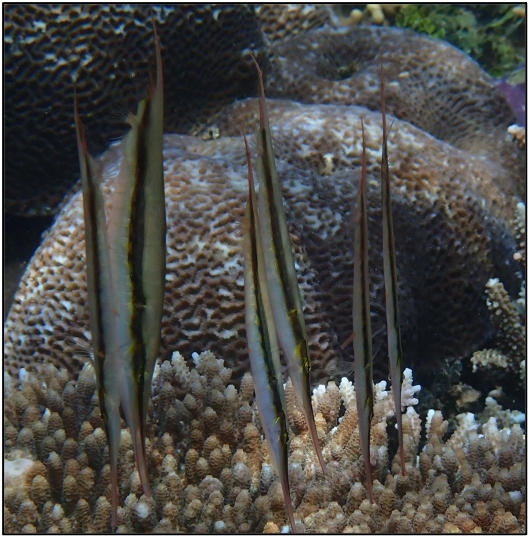
The morphology and swimming mode of shrimpfish both help them feed and avoid predators. © Alex Kattan
Above Water Wonders
While the underwater world often takes center stage, Raja Ampat’s bird life is just as mesmerizing. On my first trip, for example, I came focused on cataloging all species of fish I encountered. But I was quickly captivated by the diversity and beauty of the birds overhead. With Dalton’s passionate help, I was introduced to birds-of-paradise, hornbills, megapodes, cockatoos, parrots, and sea eagles. These fascinating “fish of the sky,” as I like to call them, add a new dimension to the experience and often become guest favorites. Whether you are an avid birder or simply curious, the biodiversity above the surface is just as rewarding as below.

A male Red Bird-of-Paradise does his best to impress a female. Found nowhere else in the world, these are just one of many species of birds that will awe both novice and seasoned birders alike.
Why Raja Ampat?
I hope that I have painted a picture of why I think Raja Ampat is one of the most incredible marine destinations on Earth. Its remoteness, biological richness, and world-class reefs make it a dream destination for snorkelers, divers, photographers, and nature lovers alike.
It’s a place where you may arrive hoping to see certain things, whether mantas or pygmy seahorses, but leave in awe of creatures you previously overlooked or never knew existed. Each trip offers new surprises, new stories, and new inspiration.
I hope you’ll join us to experience this marine paradise for yourself!

